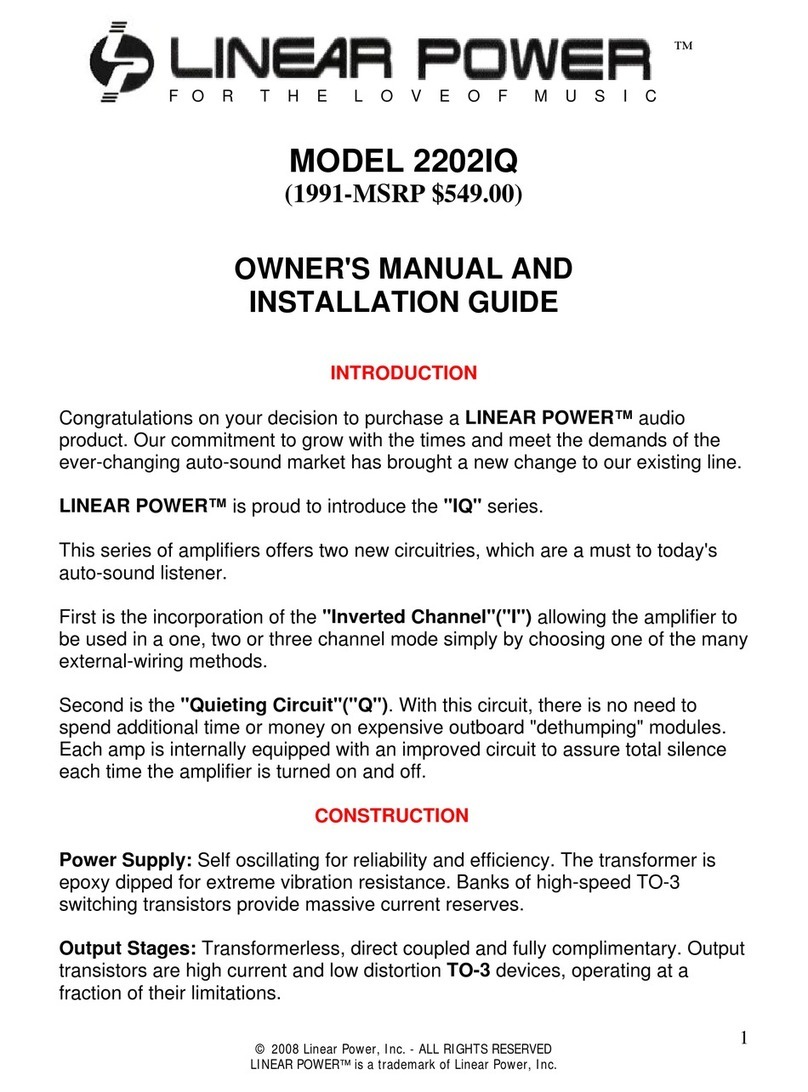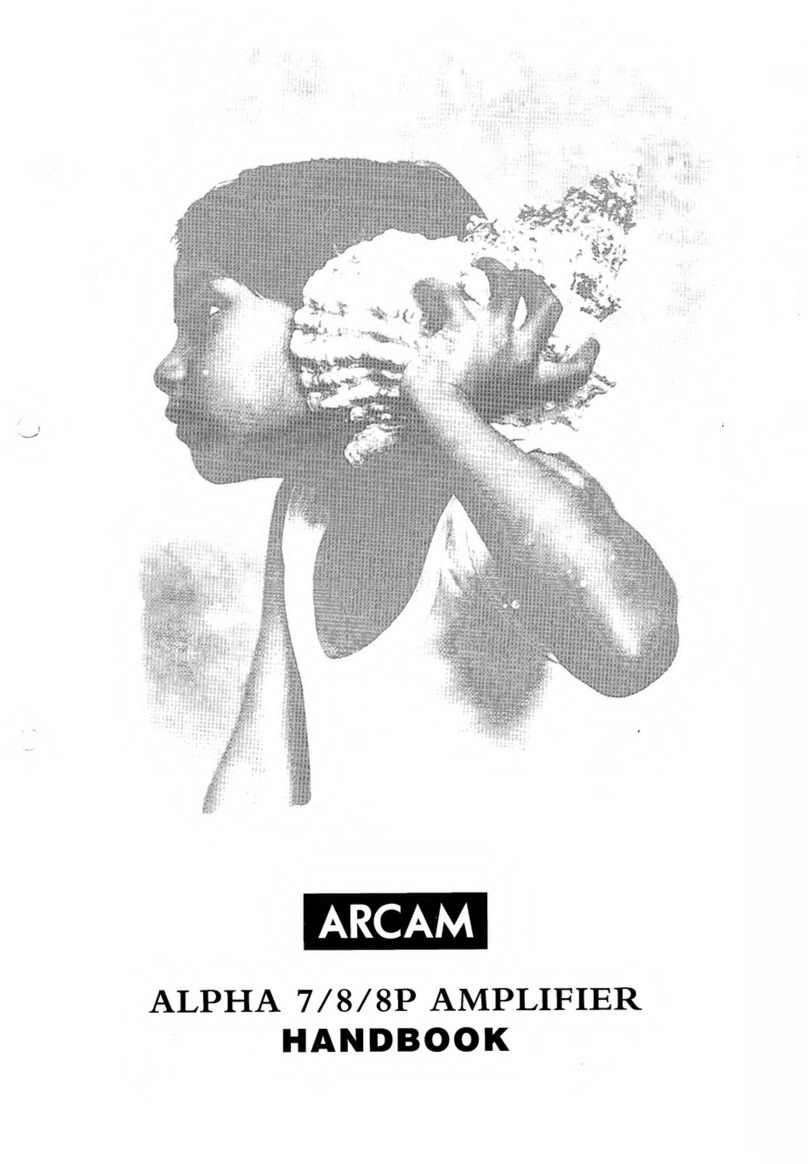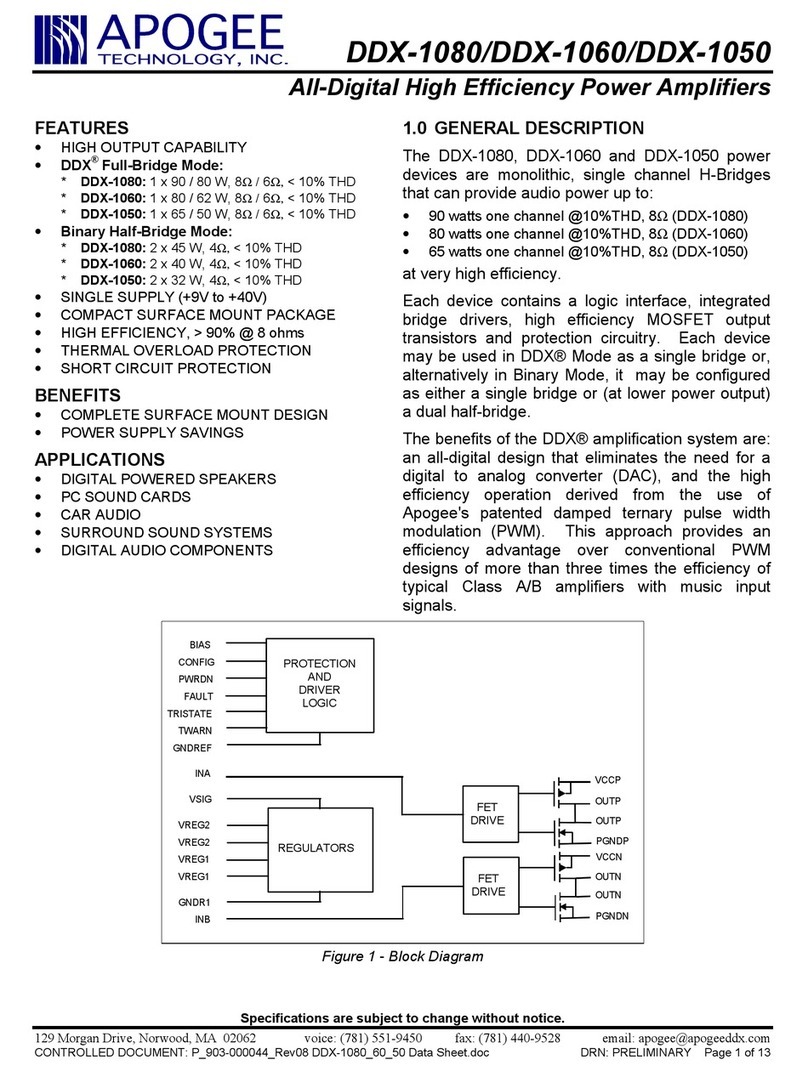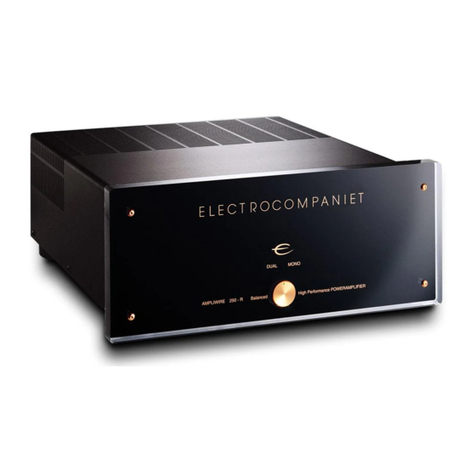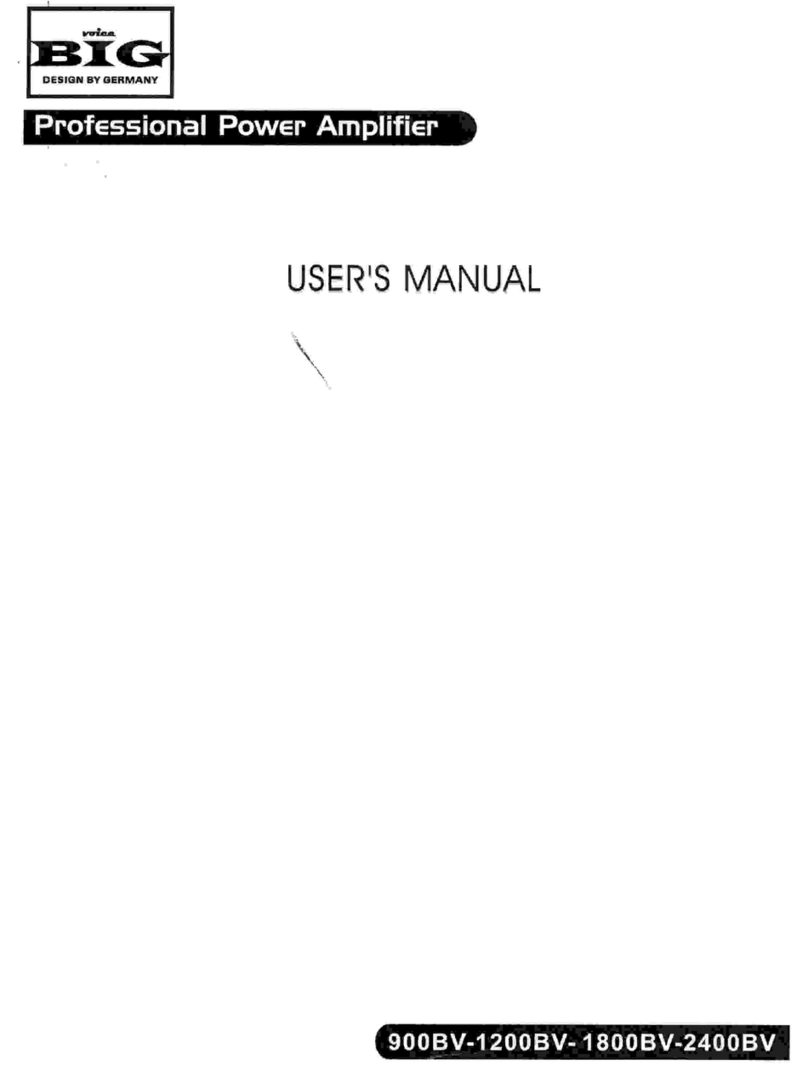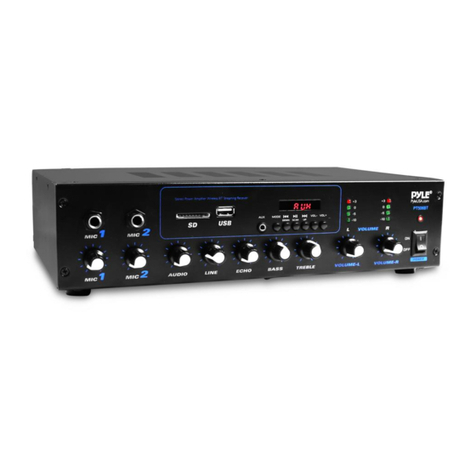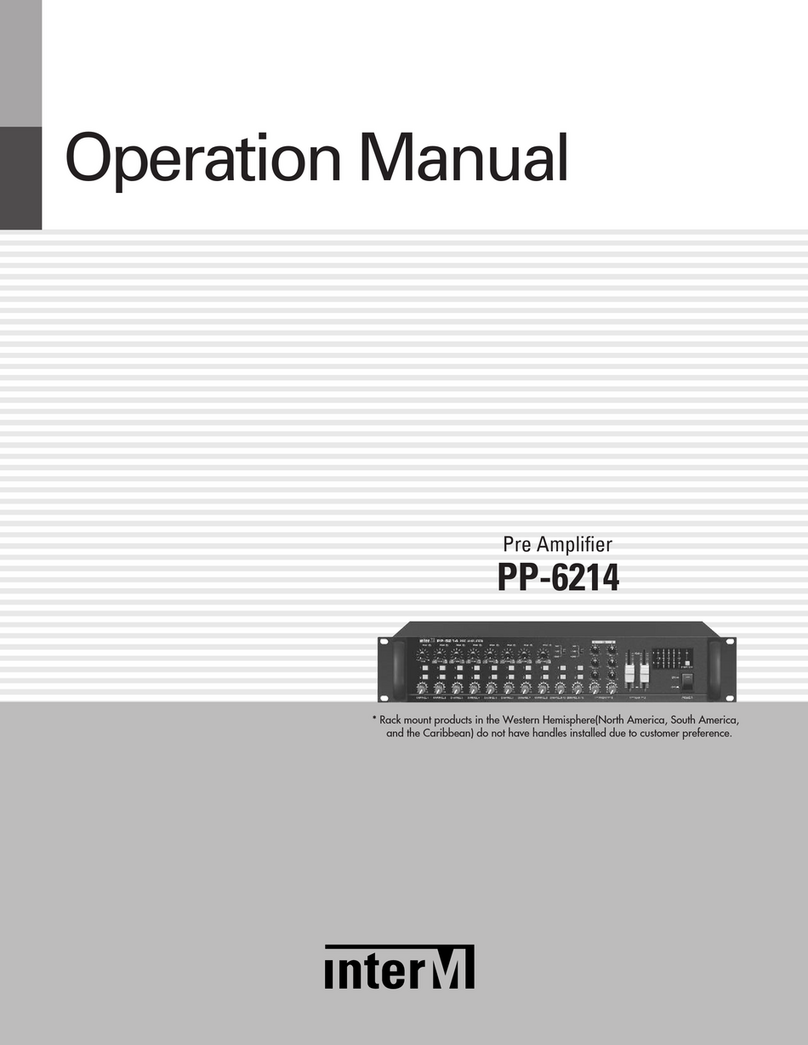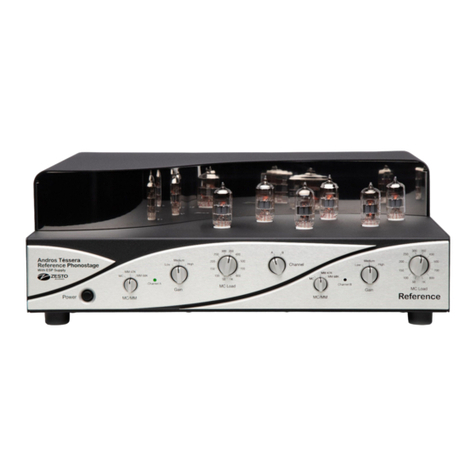Linear LT1222 User manual

1
dc1416f
DEMO MANUAL DC1416
Description
LT1222 and LT1793
Low Noise
Transimpedance Amplifier
Demonstration circuit 1416 is a low noise transimpedance
amplifier. It utilizes the low voltage noise LT
®
1222 op amp,
and the low current noise LT1793 op amp, along with
the discrete NXP JFET BF862, allowing the user to take
advantage of each component’s particular optimization.
L, LT, LTC, LTM, Linear Technology and the Linear logo are registered trademarks of Linear
Technology Corporation. All other trademarks are the property of their respective owners.
performance summary
These components are arranged with jumpers allowing
variouscompositeconfigurations.Asocketedphotodiode,
OSRAM SFH213, is also provided.
Design files for this circuit board are available at
http://www.linear.com/demo/DC1416
Specifications are at TA= 25°C, VS= ±12V
SYMBOL PARAMETER CONDITIONS TYP UNITS
VSSupply Voltage ±12 V
AZTIA Gain 1M Ω
VOS Input Offset Voltage LT1793 (VOS + IBIAS •10M) 300 µV
dVOS /dT Input Offset Voltage Drift LT1793 (dVOS/dT +dIBIAS/dT •10M) 10 µV/C
IBIAS Input Bias Current LT1793 + BF862 6 pA
en Input Voltage Noise Density f = 100kHz, JFET In Gain Configuration 1 nV/√Hz
en Input Voltage Noise Density f = 100kHz, Source Follower Configuration 3 nV/√Hz
CIN Input Capacitance f = 10kHz, Source Follower Configuration 2 pF
GBW Gain Bandwidth Product JP In (CCOMP = 49pF) 70 MHz
GBW Gain Bandwidth Product JP Out (CCOMP = 10pF) 190 MHz
GBW Gain Bandwidth Product JP Out, C7 Removed (CCOMP = 0pF) 500 MHz
BW –3dB Bandwidth With SFH213, 1MΩ Gain, JP7 Out 2 MHz
VOUT Output Voltage Swing Cathode Input, Integrator In 0 to 10 V
VOUT Output Voltage Swing Cathode Input, Integrator Out –0.4 to –10 V
VOUT Output Voltage Swing Anode Input, Integrator In 0 to –10 V
VOUT Output Voltage Swing Anode Input, Integrator Out –0.4 to –10 V
ICC Supply Current VS= ±12V 17 mA
IBIAS Input Bias Current LT1793 + BF862 6 pA
PSRR Power Supply Rejection Ratio ±5V to ±15V, Integrator In 95 dB

2
dc1416f
DEMO MANUAL DC1416
operating principles
Composite amplifiers using single JFET inputs can be
classified into two groups:common drain (or “source
follower”) and common source (or “JFET in gain”). The
standard jumper configuration of this board, as shipped
and as indicated on the silkscreen, has the JFET as a
source follower.
Another classification is DC accuracy. The LT1793 has
been provided on board as an integrator to provide DC
accuracy, overriding the high 400mV or so VGS of the
JFET. The standard jumper configuration is “Integrator
In”, so the TIA will be DC accurate to within the VOS of the
LT1793 (900µV max). With the integrator removed from
the circuit, the DC error rises to 400mV or so.
The feedback resistor, which sets the TIA gain, is 1MΩ. So
theoutputwillrespondat1Vpermicroampofphotocurrent.
Quick start proceDure
Demonstration circuit 1416 is shipped with the jumpers
set for source follower operation with the integrator in.
If the jumpers have been changed, restore them to the
positions shown in the schematic. Refer to Figure 1 for
proper measurement equipment setup and follow the
procedure below:
1. With power off, connect the +12V, –12V, and Com
leads from the power supply to the V+, V–, and GND
terminals of the demo circuit, as shown in Figure 1.
2. With power off, connect the VOUT of the demo circuit
to an oscilloscope or DMM. You can use either the
gold SMA connector or the turrets provided on board,
or both. Set a high range such as 2V/DIV on the oscil-
loscope, or VDC on the DMM.
3. Turn on the power supply.
4. You should now be able to wave your hand over the
clear photodiode provided on the board (upper left of
Figure 1) and see the effect in both DC signal and noise.
With the photodiode in darkness, or removed from its
socket, the output should sit near ground.
5. You can now connect an optical source to excite the
photodiode in a more controlled manner. The easiest
way is to drive an LED directly from a function genera-
tor, with the function generator’s internal 50Ω source
impedance as a current limiter. Any standard color or
IR LED can be used, as the photodiode provided has
a wide sensitivity. Be careful not to overdrive sensitive
devices such as small lasers.
6. Youcannowdecidewhethertoplaywithotherconfigura-
tions(JFET ingain, integratorout, morecompensation,
etc), or to replace the provided photodiode with the one
you intend to use.

3
dc1416f
DEMO MANUAL DC1416
Quick start proceDure
Table 1. Jumper Settings for Various Configurations. Refer to Figures 2 and 3 for Qualitative Descriptions of the Configurations and to
Figure 4 for the Complete Schematic.
JUMPER TYPE CIRCUIT
SOURCE FOLLOWER
INTEGRATOR IN
SOURCE FOLLOWER
INTEGRATOR OUT
JFET IN GAIN
INTEGRATOR IN
JFET IN GAIN
INTEGRATOR OUT
JP1 1x3 JFET Drain 1, 2 1, 2 2, 3 2, 3
JP2 2x3 JFET Source 1, 2 1, 2 5, 6 3, 4
JP3 1x3 LT1222 –Input 1, 2 1, 2 2, 3 2, 3
JP4 1x3 Photodiode Bias 1, 2 1, 2 1, 2 1, 2
JP5 1x3 Integrator Output 1, 2 Out 2, 3 Out
JP6 1x3 Integrator Input 1, 2 2, 3 1, 2 2, 3
JP7 1x2 LT1222 Compensation Out Out In In
JP8 1x2 LT1222 +Input Out In Out Out
Figure 1. Proper Supply Connections. Board Is Shown for Source
Follower with Integrator In (JP1 through JP6 Have Shunt in Position1.
JP7 and JP8 Are Open.)
POWER
SUPPLY
+
–
12
+
–
12
DC1416 F01

4
dc1416f
DEMO MANUAL DC1416
DC1416 F02
–
+
LT1222
2V
+12V
–12V
R3
2.49k
D
S
GVOUT
NXP
BF862
R1
1MΩ
–12V
–
+
LT1222
+12V
–12V R7
3.01k
D
S
G
VOUT
NXP
BF862
R1
1MΩ
SOURCE FOLLOWER JFET IN GAIN
–
+
DC1416 F03
–
+
LT1222
2V
+12V
–12V
R3
2.49k
R6
221Ω
R11
10MΩ
R11
10MΩ
D
S
GVOUT
NXP
BF862
R1
1MΩ
R10
1k
C9
10nF
C9
10nF
–12V
–
+
LT1222
–
+
LT1793LT1793
+12V
–12V R7
3.01k
D
S
G
VOUT
NXP
BF862
R1
1MΩ
SOURCE FOLLOWER WITH INTEGRATOR JFET IN GAIN WITH INTEGRATOR
Figure 2. The Two Basic Types of JFET Configuration. The Left Shows the JFET as a Source
Follower, Simply Buffering the Feedback Resistor to the Op Amp’s Inverting Input. The Right
Shows the JFET In Gain, with Source Grounded. Because the JFET Inverts, the Feedback Is Now
Applied to the Op Amp’s Non-Inverting Input. In Both Cases, the Effective Input Offset Voltage
Is One JFET VGS (About –400mV). The Source Follower Configuration Is the Simplest and Most
Versatile, but the JFET In Gain Configuration Offers the Highest Achievable Gain-Bandwidth
Product and the Lowest Voltage Noise. Output Noise at Low and Medium Frequencies (10kHz to
100kHz) Is 130nV/√Hz, Dominated Entirely by the Feedback Resistor
Figure 3. The Two Basic Types of JFET Configuration Again, but Shown with LT1793 Integrators
which Zero Out the Overall Input Offset Voltage. On the Left, the JFET VGS Is Forced to the
LT1793 Non-Inverting Input. On the Right, the Integrator Puts JFET VGS at the Source Directly.
In both Cases, the 10M Sensing Resistor R11 Injects 40fA/√Hz of Current Noise, which Is
Discernible but Relatively Small Compared to the 130fA/√Hz of the 1M Feedback Resistor. The
Output Noise at Low to Medium Frequencies Is about 136nV/√Hz

5
dc1416f
DEMO MANUAL DC1416
Information furnished by Linear Technology Corporation is believed to be accurate and reliable.
However, no responsibility is assumed for its use. Linear Technology Corporation makes no representa-
tion that the interconnection of its circuits as described herein will not infringe on existing patent rights.
schematic Diagram
5
5
4
4
3
3
2
2
1
1
D D
C C
B B
A A
TECHNOLOGY
GLEN B.
TECHNOLOGY
GLEN B.
TECHNOLOGY
GLEN B.
JP8JP8
J1
J1
JP6JP6
JP7JP7
Figure 4. DC1416 Demo Circuit Schematic

6
dc1416f
DEMO MANUAL DC1416
Linear Technology Corporation
1630 McCarthy Blvd., Milpitas, CA 95035-7417
(408) 432-1900 ●FAX: (408) 434-0507 ●www.linear.com
© LINEAR TECHNOLOGY CORPORATION 2016
LT 1116 • PRINTED IN USA
DEMONSTRATION BOARD IMPORTANT NOTICE
Linear Technology Corporation (LTC) provides the enclosed product(s) under the following AS IS conditions:
Thisdemonstration board (DEMO BOARD) kitbeing sold or provided byLinear Technology is intended for use for ENGINEERING DEVELOPMENT
OR EVALUATION PURPOSES ONLY and is not provided by LTC for commercial use. As such, the DEMO BOARD herein may not be complete
in terms of required design-, marketing-, and/or manufacturing-related protective considerations, including but not limited to product safety
measures typically found in finished commercial goods. As a prototype, this product does not fall within the scope of the European Union
directive on electromagnetic compatibility and therefore may or may not meet the technical requirements of the directive, or other regulations.
If this evaluation kit does not meet the specifications recited in the DEMO BOARD manual the kit may be returned within 30 days from the date
of delivery for a full refund. THE FOREGOING WARRANTY IS THE EXCLUSIVE WARRANTY MADE BY THE SELLER TO BUYER AND IS IN LIEU
OF ALL OTHER WARRANTIES, EXPRESSED, IMPLIED, OR STATUTORY, INCLUDING ANY WARRANTY OF MERCHANTABILITY OR FITNESS
FOR ANY PARTICULAR PURPOSE. EXCEPT TO THE EXTENT OF THIS INDEMNITY, NEITHER PARTY SHALL BE LIABLE TO THE OTHER FOR
ANY INDIRECT, SPECIAL, INCIDENTAL, OR CONSEQUENTIAL DAMAGES.
The user assumes all responsibility and liability for proper and safe handling of the goods. Further, the user releases LTC from all claims
arising from the handling or use of the goods. Due to the open construction of the product, it is the user’s responsibility to take any and all
appropriate precautions with regard to electrostatic discharge. Also be aware that the products herein may not be regulatory compliant or
agency certified (FCC, UL, CE, etc.).
No License is granted under any patent right or other intellectual property whatsoever. LTC assumes no liability for applications assistance,
customer product design, software performance, or infringement of patents or any other intellectual property rights of any kind.
LTC currently services a variety of customers for products around the world, and therefore this transaction is not exclusive.
Please read the DEMO BOARD manual prior to handling the product. Persons handling this product must have electronics training and
observe good laboratory practice standards. Common sense is encouraged.
This notice contains important safety information about temperatures and voltages. For further safety concerns, please contact a LTC application
engineer.
Mailing Address:
Linear Technology
1630 McCarthy Blvd.
Milpitas, CA 95035
Copyright © 2004, Linear Technology Corporation
This manual suits for next models
2
Table of contents
Other Linear Amplifier manuals
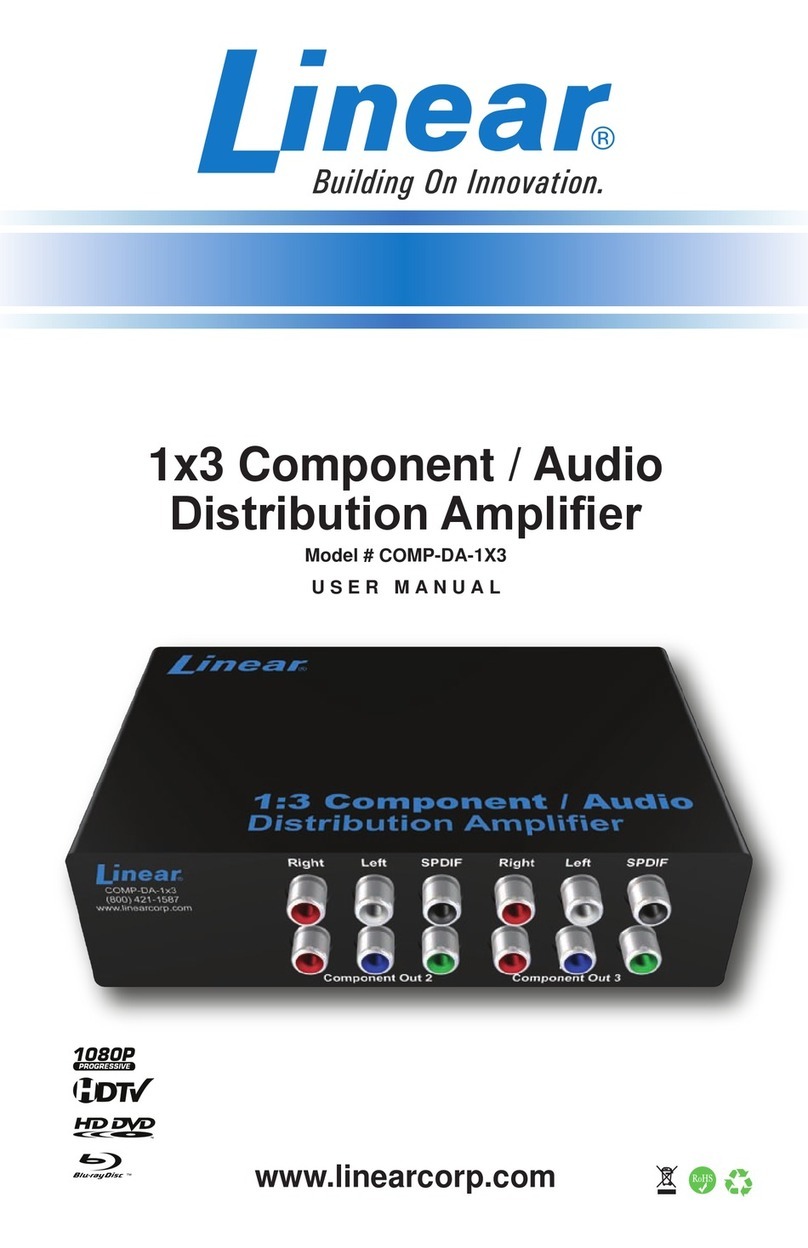
Linear
Linear COMP-DA-1X3 User manual
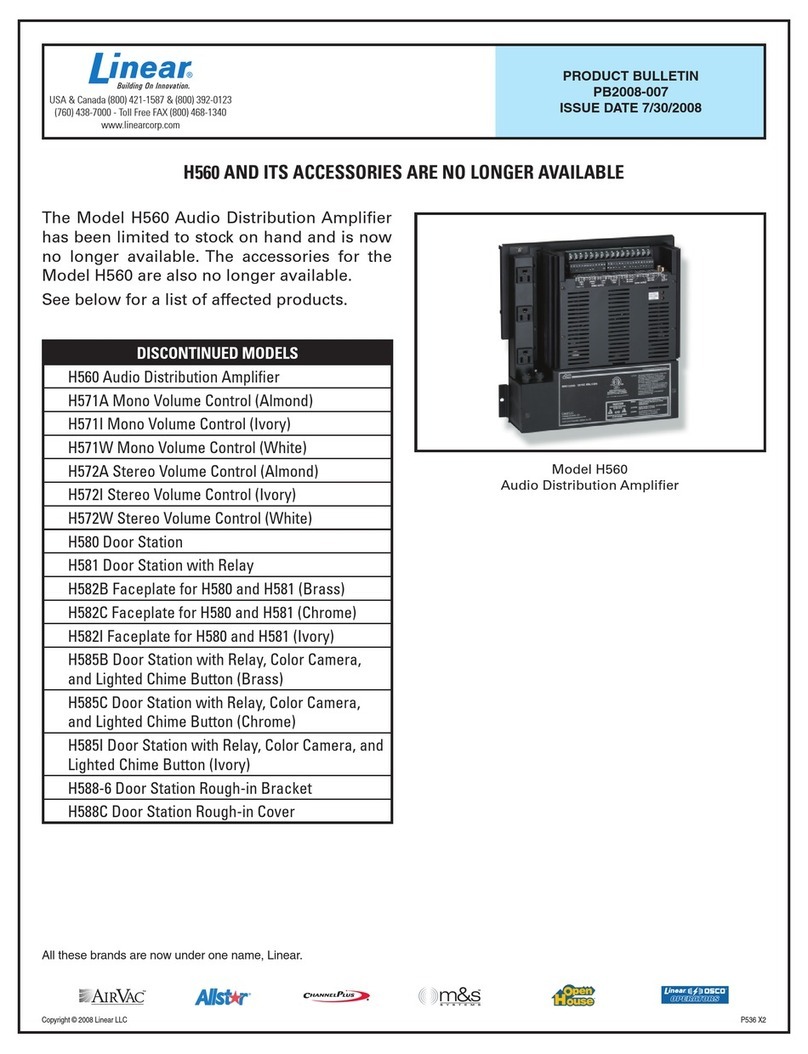
Linear
Linear H560 User manual
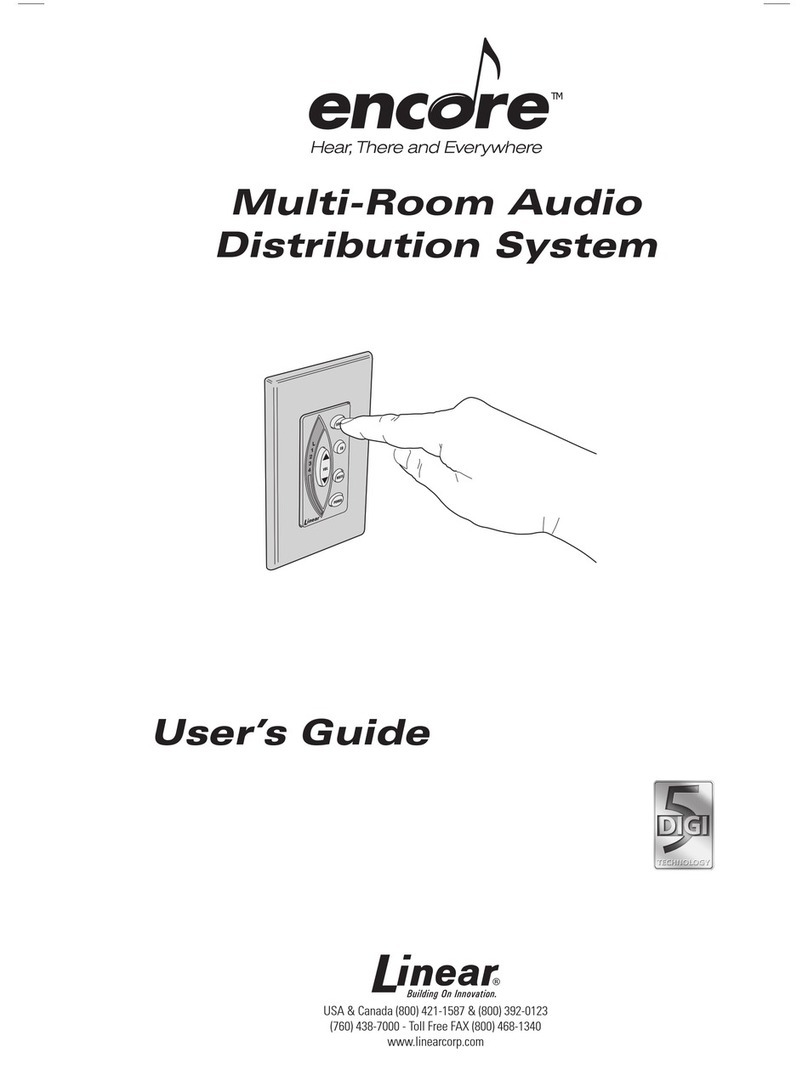
Linear
Linear Encore User manual
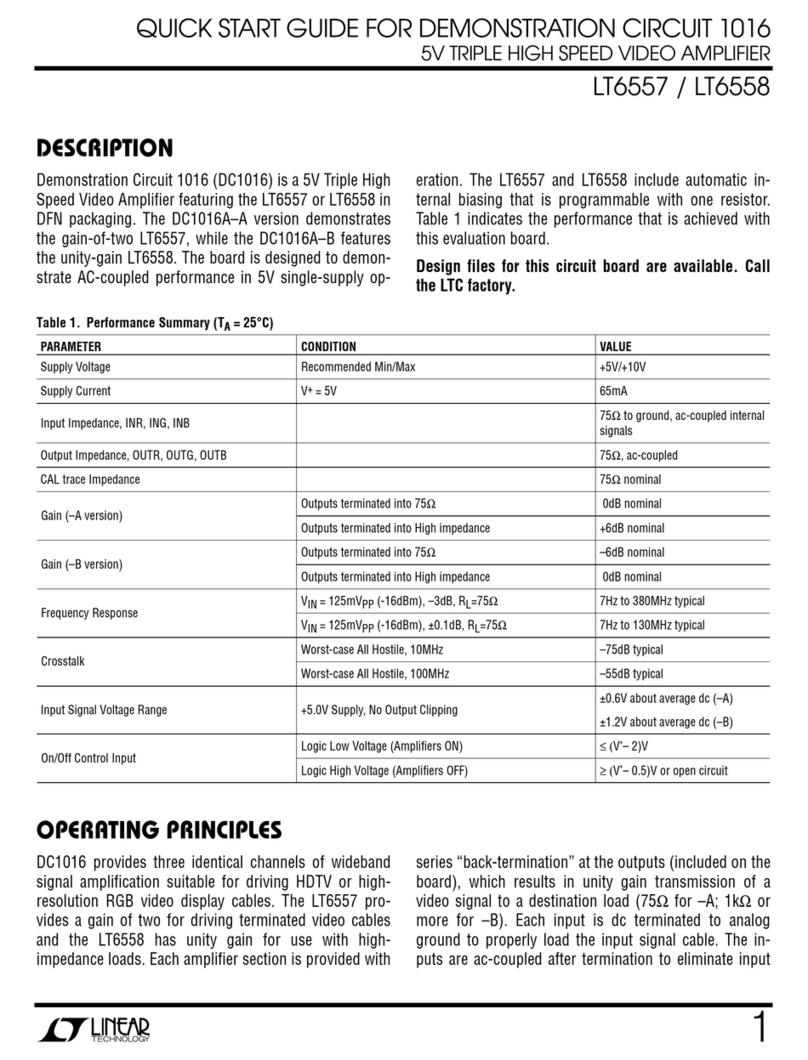
Linear
Linear LT6557 User manual

Linear
Linear HDMI-DA-1X8 User manual
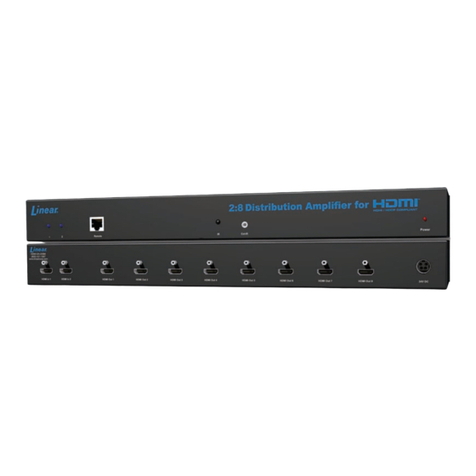
Linear
Linear HDMI-DA-2X8M User manual

Linear
Linear NOR FOUND ENC-SIWP User manual
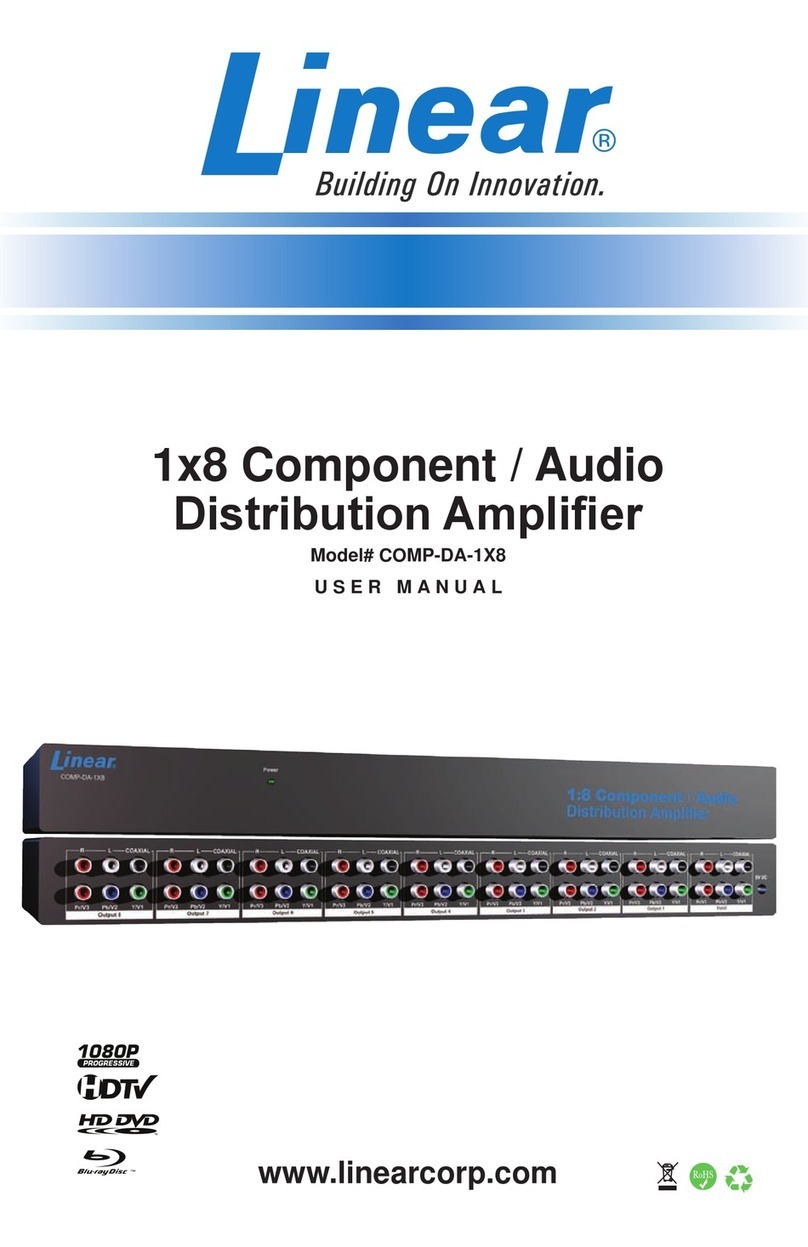
Linear
Linear COMP-DA-1X8 User manual
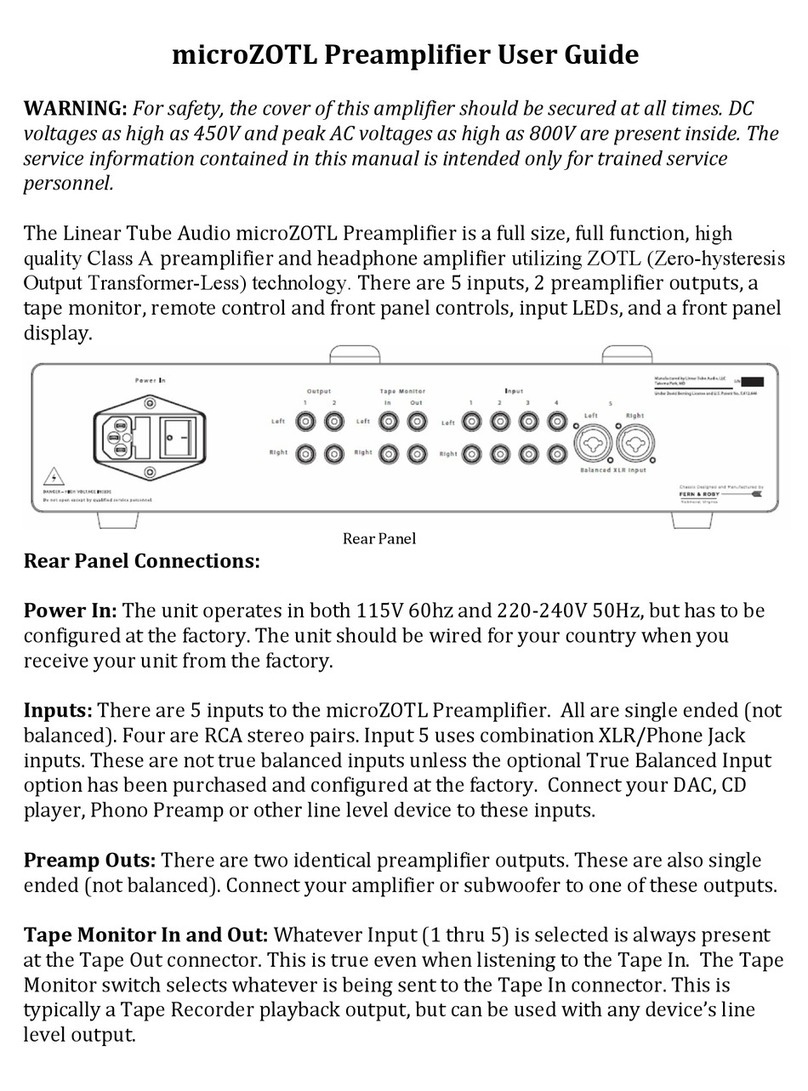
Linear
Linear microZOTL User manual
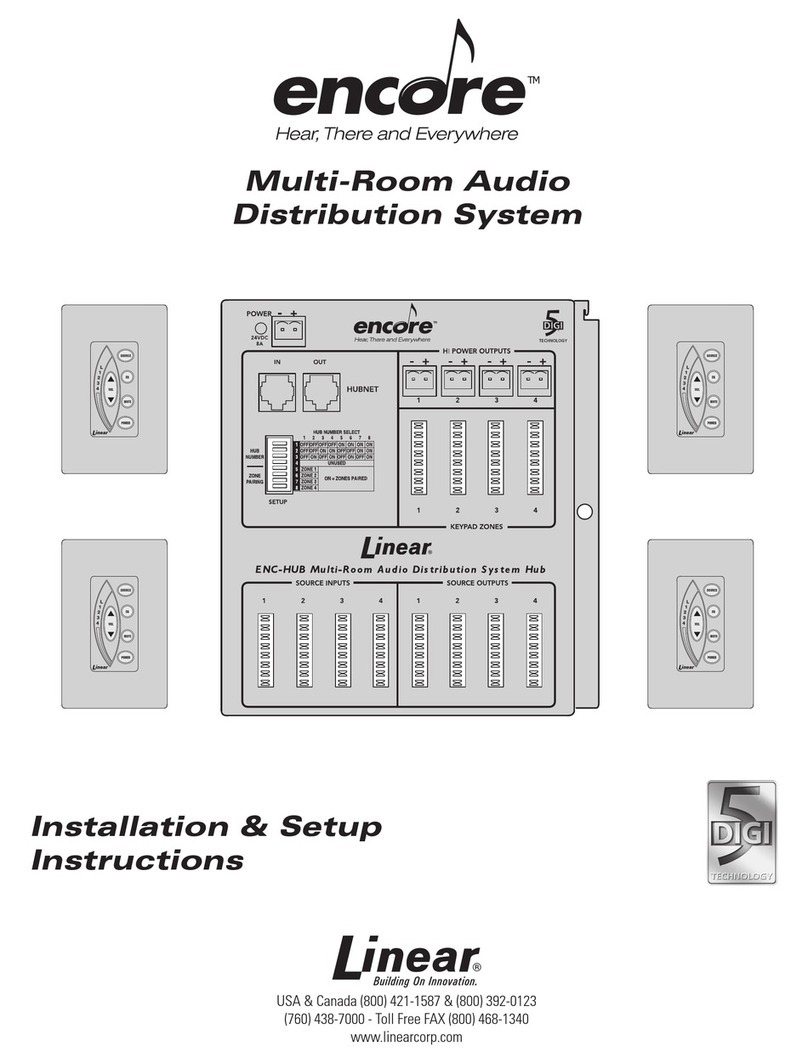
Linear
Linear Encore Manual
Popular Amplifier manuals by other brands
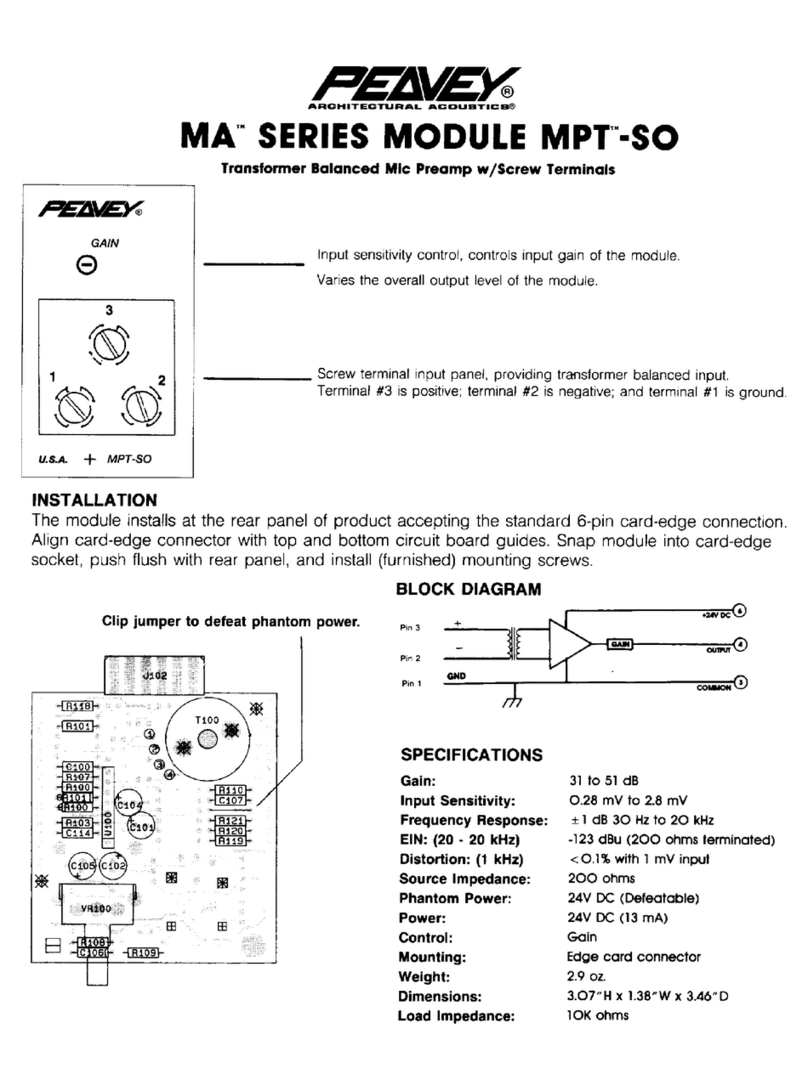
Peavey
Peavey MPT-SO manual

Electrohome
Electrohome PA-300 Instruction leaflet & service information
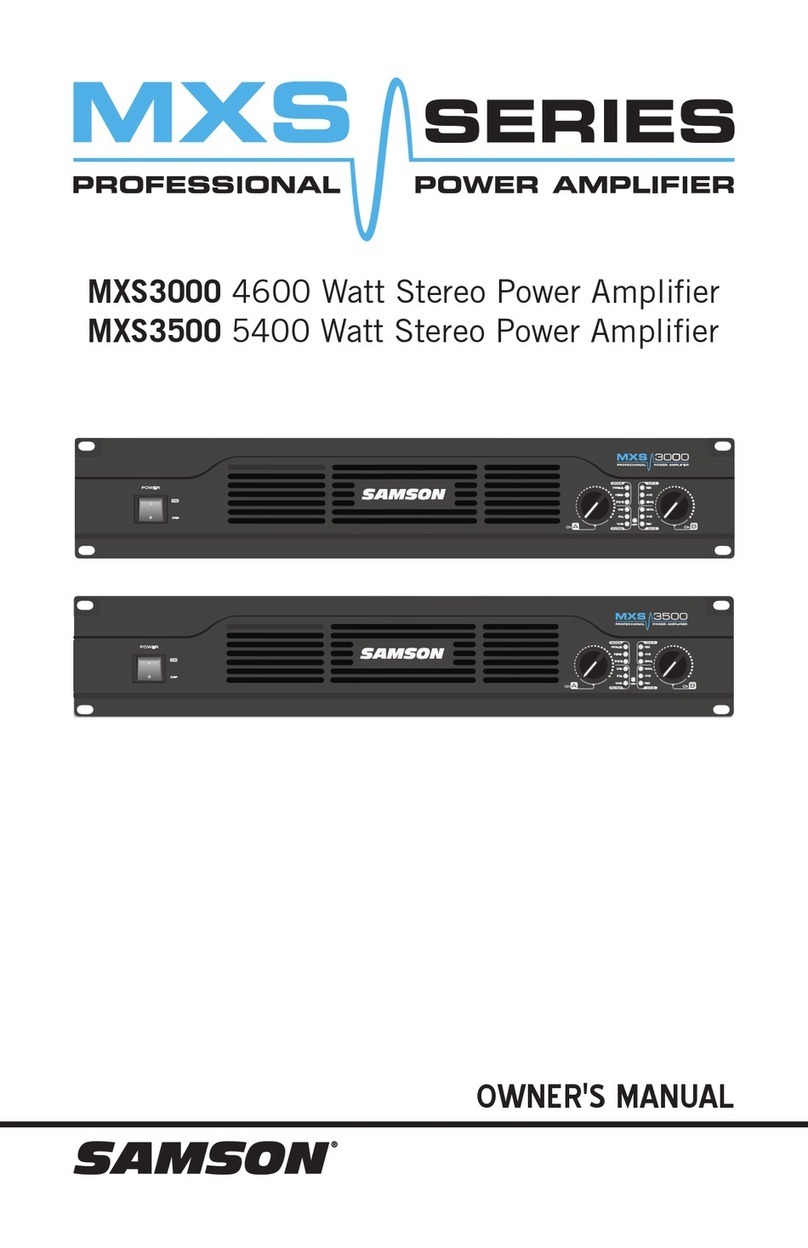
Samson
Samson MXS3000 owner's manual
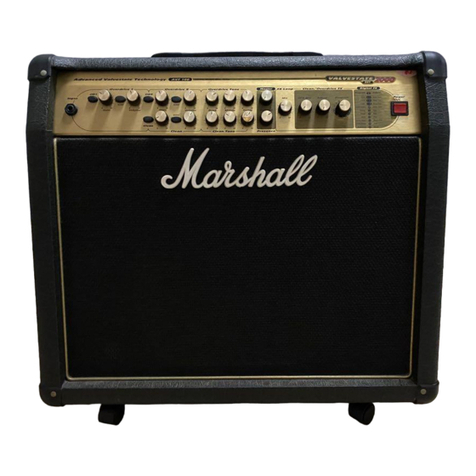
Marshall Amplification
Marshall Amplification Valvestate 2000 AVT series instructions
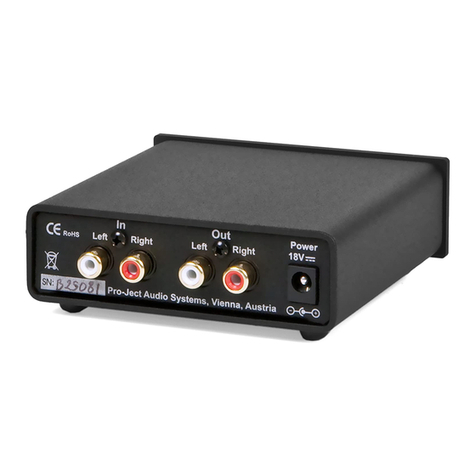
Pro-Ject Audio Systems
Pro-Ject Audio Systems Pro-Ject Head Box S Instructions for use

VHT
VHT 212HC user manual
